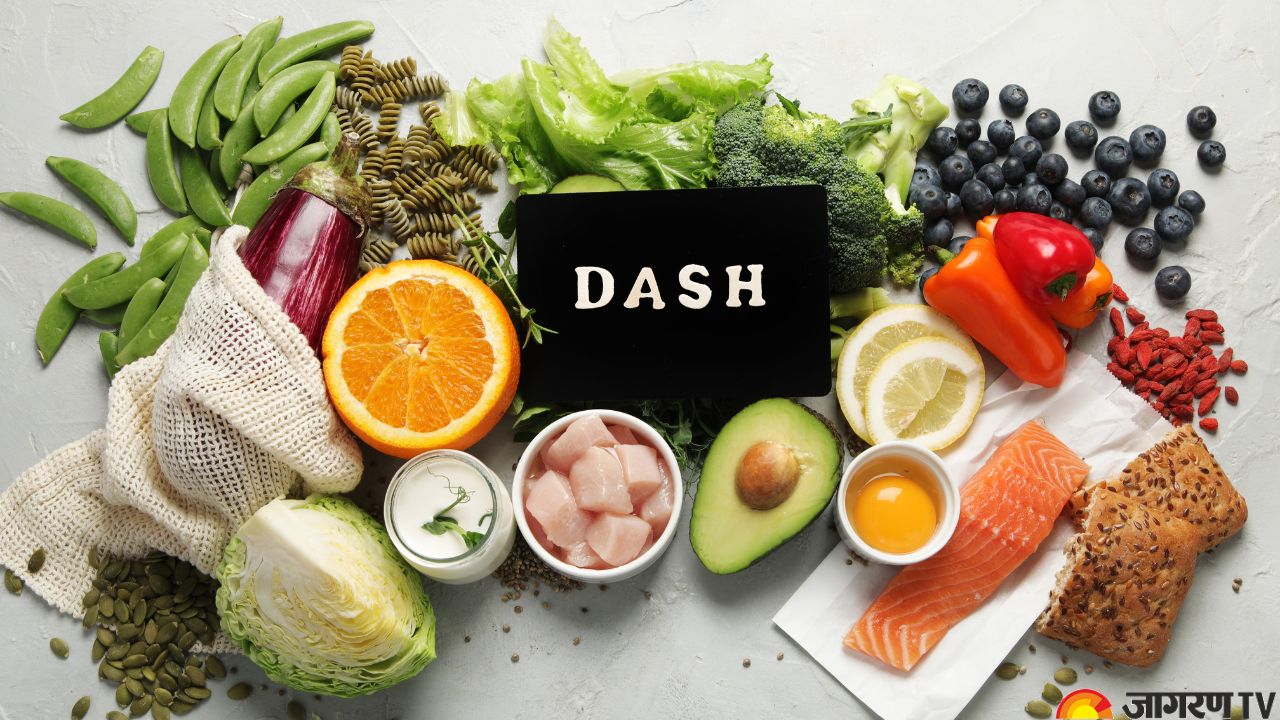World Hypertension Day 2025: How DASH Diet Helps in Managing High BP? Know Benefits, Tips to Follow, and More

World Hypertension Day 2025: Maintaining a balanced diet is essential for preventing and managing high blood pressure. The foods we eat have a direct impact on our cardiovascular health, and following a planned dietary strategy can help to lower blood pressure and reduce the risk of associated problems.
DASH (Dietary Approaches to Stop Hypertension)
The DASH diet (Dietary Approaches to Stop Hypertension) is a well-researched and widely recommended eating plan for managing and preventing high blood pressure. It emphasises a diverse range of nutrient-dense meals while reducing sodium, saturated fat, and added sugars.
DASH Diet Core Principles
The DASH diet is based on certain food categories and nutrient intake. These key elements work together to support good blood pressure and general well-being.
-
Encourage a high intake of fruits, vegetables, and whole grains.
-
Encourage the consumption of low- or fat-free dairy products.
-
Encourage the use of lean protein sources (fish, chicken without skin, beans, nuts).
-
Limit your saturated and total fat intake.
-
Limit salt consumption.
-
Limit added sugars and sweets.
How DASH Diet Works?
The DASH diet is a combination of many nutrients that work together to enhance its efficiency. The increased potassium intake aids the kidneys in removing excess sodium from the body. Magnesium and calcium regulate blood vessel function, promoting relaxation. Fibre promotes overall cardiovascular health.
Health Benefits of DASH Diet
While the DASH diet is primarily intended to lower blood pressure, research has shown that it gives various other health benefits.
Reduced Risk of Cardiovascular Disease
Lowering blood pressure and reducing cholesterol levels can reduce the risk of heart attack, stroke, and heart failure.
Improved Cholesterol Levels
It may help reduce LDL (bad) cholesterol and triglycerides. Some variants, such as the OmniHeart diet, which adds more healthy fats or protein to the DASH diet, may also help maintain or improve HDL (good) cholesterol levels.
Manages Type 2 Diabetes
The emphasis on healthy grains, fruits, and vegetables helps to regulate blood sugar levels and enhance insulin sensitivity.
Weight Management
The emphasis on nutrient-dense, low-calorie foods can help you achieve and maintain a healthy weight.
Reduced Risk of Certain Cancers
Some studies suggest that following the DASH diet reduces the risk of certain cancers, presumably due to its high antioxidant and fibre content.
Kidney Health
It may help avoid kidney stones and lower the chance of developing renal disease.
Reduced Risk of Gout
Individuals with gout may benefit from the DASH diet because it lowers serum uric acid levels.
Tips to Follow DASH Diet
Adopting a new eating pattern necessitates practical techniques to ensure consistency and long-term success. These guidelines will help you smoothly integrate the DASH diet into your regular routine.
-
Start making adjustments gradually to improve sustainability.
-
Focus on ingesting whole, less processed foods.
-
Read food labels carefully, paying attention to salt levels.
-
Choose low-sodium choices wherever possible.
-
Instead of salt, season your cuisine with herbs, spices, garlic, onion, and lemon juice.
-
Increase your consumption of fruits and vegetables in meals and snacks.
-
Choose whole wheat bread, brown rice, and oats over processed grains.
-
Prioritise lean protein sources such as fish, skinless chicken, beans, and lentils.
-
Reduce your intake of processed foods due to high sodium, harmful fats, and added sugars.
-
To control your overall calorie intake, keep your portion sizes in check.
-
Stay hydrated by drinking plenty of water.
-
Combine the diet with frequent physical activity for maximum results.









